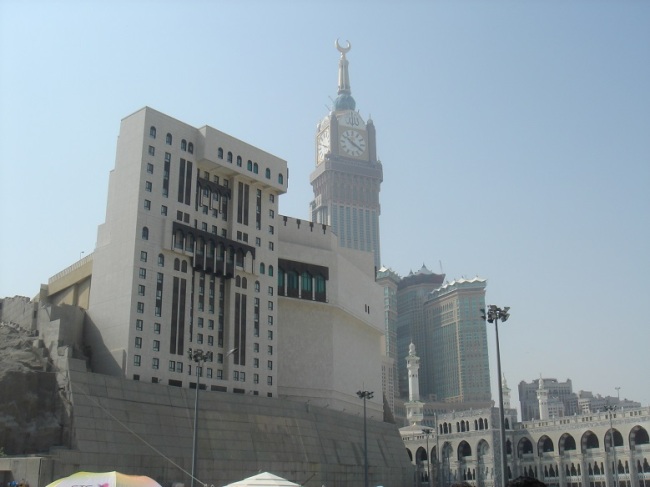
1. Adam (peace be upon him or “as”) is buried in Makkah? According to Imam Al-Tabari, the famous 9th century commentator of the Qur’an and historian, Adam (as) was buried after his death, by his son Shayth (Seth), in a cave beneath the mountain of Abu Qubays (the large grey structure at the bottom of the above picture marks its location), that overlooks the Valley of Makkah (which sadly, due to recent construction works, is no longer really a valley).
On a side note – Mount Abu Qubays is also believed to be where the Prophet, may God honour him and give him peace or “saw”) stood when he (saw) split the moon in half, with God’s permission.
2. Where was Hawwa a.k.a. Eve (as) buried then? In Jeddah! (that first place you touch down in Saudi when going for Umrah). Upon her death, she was buried on the shores of the Red Sea in an area which celebrates her name to this day – Jeddah/Jiddah, which literally means “grand-mother” in Arabic.
In the year 647, with the consensus of the Makkans, the third Caliph, Uthman (may God be pleased with him or “ra”), decided that Jeddah would now become Makkah’s official port due to its closer proximity to Makkah than its previous port of Al-Shu’aybeeyah (Paasha Rifat, Mir’aat al-Haramayn)
3. “Makkah” is actually some kind of bird? Well that’s one meaning of the word, yes. According to Mu’jam al-Buldaan (“The Lexicon of countries”), the 13th century masterpiece written by Imam Al-Hamawi, the word “Makkah” can be traced back to a bird called “Mukkaa”, which is white in colour (no, it’s wasn’t one of the ‘Angry birds’) and has a sweet whistling chirp or tweet. It was believed that the Pre-Islamic Arabs did not consider their Hajj (pilgrimage to Makkah) to be complete unless they had “whistled” like this bird after their arrival at the Ka’bah. This is supported by the verse from the Qur’an which alludes to this unusual practice: “Their prayers at ‘the House’ where naught save whistling (‘Mukaa’n') and clapping (‘Tasdeeyatan’).” (Surah Al-’Anfal verse 35)
Another meaning that is offered for the word “Makkah” however is that while the word “Bakkah”, one of Makkah’s ancient names (and which is present in the Bible), simply refers to the place where the Ka’bah or ‘the House’ stands, “Makkah” refers to both the Ka’bah and its surrounding settlement/town.
No any other interesting facts about Makkah – feel free to share them with us in the comments section below!
p.s. most if not all of this information is from an amazing (and incredibly long) treatise on the history of Makkah and Madinah written by Sultan Al-Ghalib, may God have mercy on him.
sumber dari: malcolmesque.wordpress.com
No comments:
Post a Comment